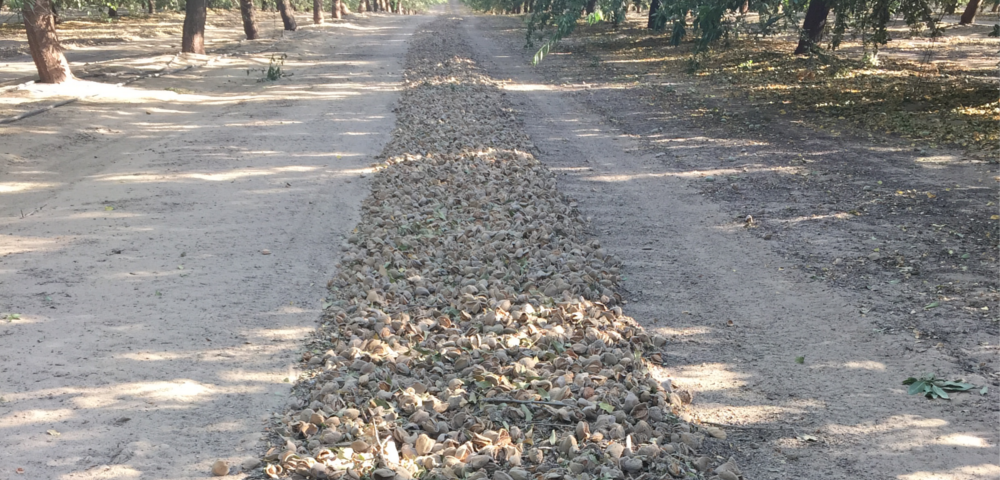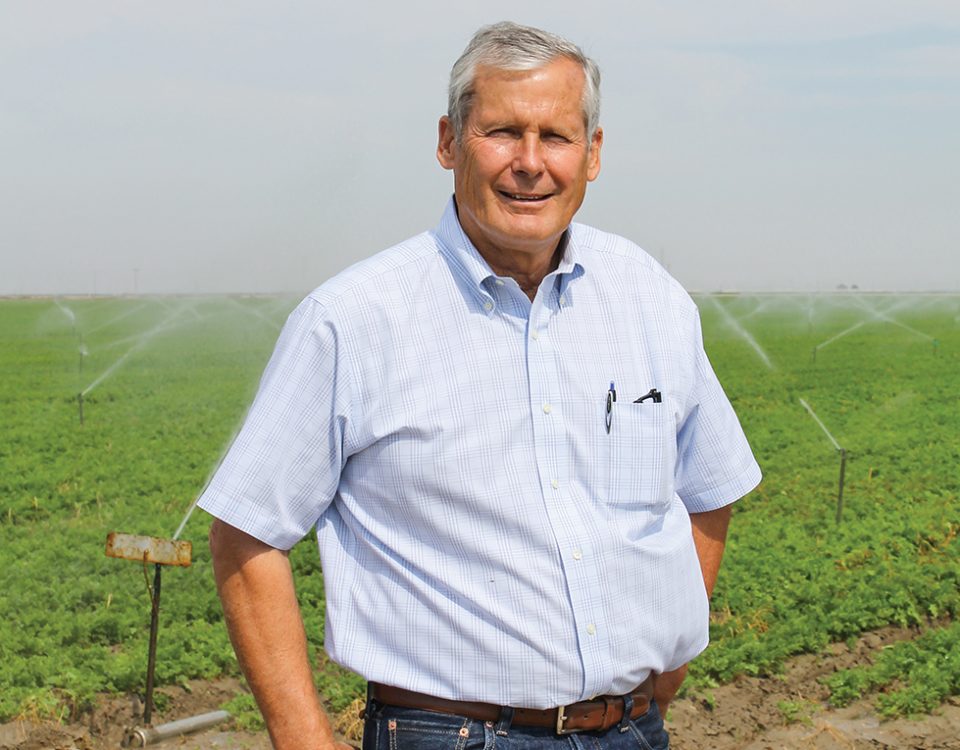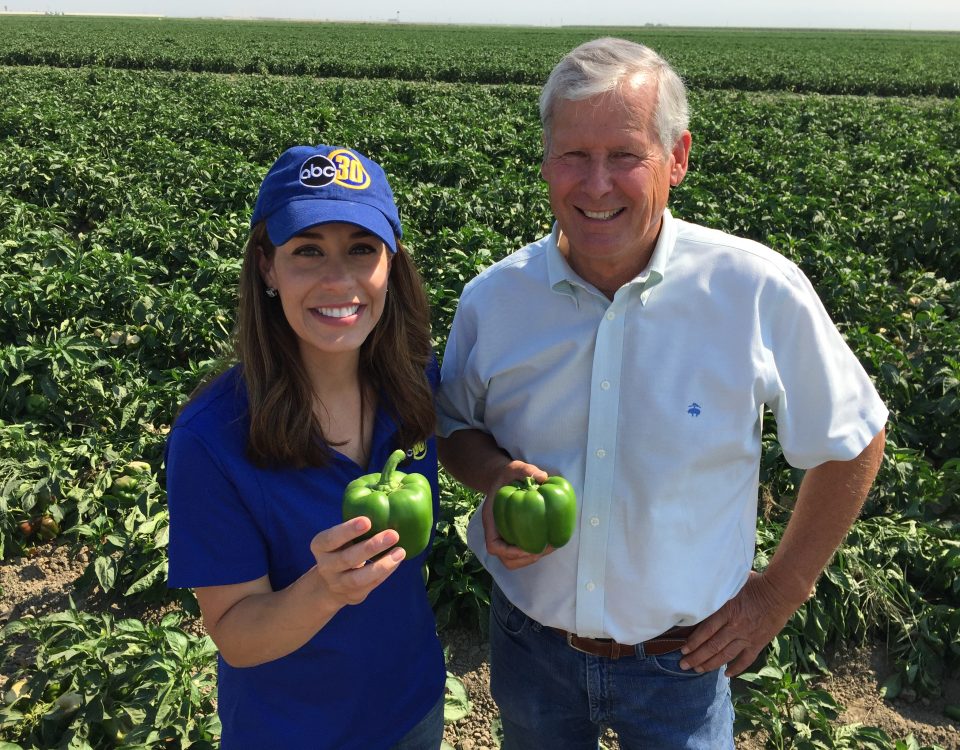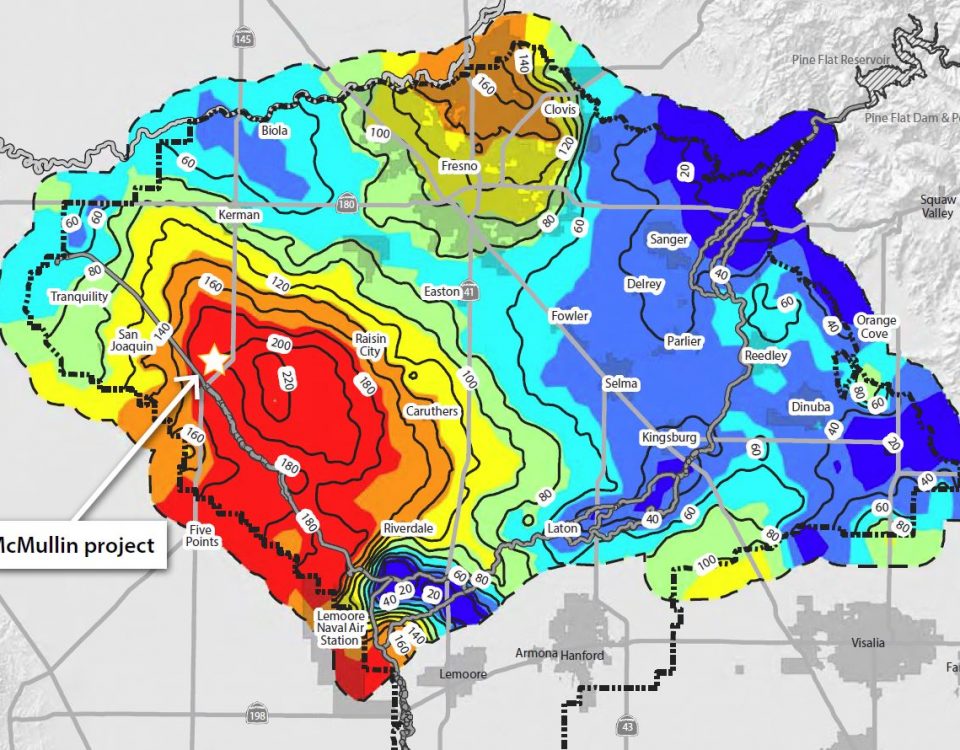In the meantime, Cameron is focused on making the most of the available water supplies. He’s tightened up his irrigation schedule.
“We don’t want to over irrigate,” he says. “We’re saving us much water as possible in each irrigation for use later when we really need it.”
This year, Cameron began experimenting with aerial cameras using infrared and other sensors to assess water and other stressors in the orchards.
“So far, we’re happy with it,” the grower says. “It’s amazing what you can see, even down at the individual tree level.
With the technology, Cameron noticed several areas in the orchards where the trees just didn’t look right. The aerial imaging detected the trees were short on water.
“As a result, we corrected it. This technology is reinforcing what we’re doing right and identifying the management areas which need attention.”
Due to drier, windier conditions, disease pressure in the almond orchards tend to be lower than areas further east in the county.
“With the last four years of drought, we haven’t been worried much by disease,” he says. “We had a little bit of shot hole earlier this season and we sprayed for it. By watching for outbreaks, we’ve been able to keep the trees clean this year.”
Mites, however, can be a major concern in the orchards, especially in newly-planted blocks which are more susceptible to this pest. He keeps a close eye on the trees, applying an insecticide early in the season if needed, and treating again later in the season at the first sign of a new threat.
After this year’s harvest, Cameron plans to remove an 80-acre orchard where yields from aging Nonpareil, Butte, and Carmel trees have continued to drop in recent years.
The big drop in almond prices which began last fall no longer justifies keeping the trees, he explains. Assuming prices remain lower compared to recent years, Cameron says tree removal should reduce the impact of lost revenue before the replacement trees planted this year come into production in three years.
The 80-acre orchard is being replaced by 150 acres of Independence trees. Cameron says the self-pollinating variety should reduce his biggest expense at bloom – bees for flower pollination.
Without the need for pollinator varieties in the Independence blocks, he expects to reduce spray and harvesting trips down the tree rows by having just one bloom, one hull split, and a single pass down the row to shake the trees and sweep up the nuts during harvests.
Cameron planted one of his two Independence blocks with 15-foot spacing between trees within the rows. The other block was planted 14 feet apart in the rows.
“Since the good soils in these blocks tend to produce larger trees, we wanted to prevent shading problems once the trees mature,” he says.
The between-row spacing of 22 feet, the same as his other orchards, is designed to accommodate equipment.
“Along with our other varieties including Nonpareil, Monterey, and Wood Colony, the Independence variety should provide good balance,” said Cameron.






